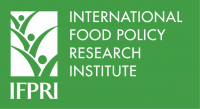
In the face of global climate change, developing country farmers are now confronted with serious risks to their livelihoods and welfare. Assets of all types – from insurance and farm equipment to livestock and land rights - have an important role to play in helping populations deal with these ever-increasing climatic risks. In addition, it will be critical for community members to work collectively to adapt to their changing local environments.
But for many female farmers in developing countries, access to important assets and community groups is limited, putting them and their entire households at a disadvantage when it comes to facing weather risks. IFPRI’s Gender and Assets program aims to help these rural women better manage their risks through a project called “Enhancing Women’s Assets to Manage Risk under Climate Change: Potential for Group-Based Approaches”. The project focuses on poor women farmers and pastoralists in Africa south of the Sahara and South Asia, particularly Ethiopia, Kenya, Mali, and Bangladesh. In October, the project released a collection of 15 policy notes that explores innovative ways to protect or strengthen women’s control over important assets such as natural resources, land and water rights, and collective power.
In the first note of the series, “Gender, Climate Change, and Group-Based Approaches to Adaptation,” authors Julia Behrman, Elizabeth Bryan, and Amelia Goh explain that climate change and climate shocks impact men and women very differently in terms of their agricultural production, food security, health, access to natural resources and other assets, and ability to recover from conflict and natural disasters. For example, farmers of both genders tend to invest more time and effort in their farms during times of weather shock; however, since women often carry the lion’s share of domestic responsibilities such as cooking and caring for children, this means that their workloads end up being much heavier than those of male farmers. Similarly, because women in developing countries often do not have access to agricultural technologies and inputs (like farm equipment, irrigation, and improved seeds), they are typically less able to successfully adapt to changing climatic conditions than male farmers. While men tend to seek additional work in times of weather shock and lowered farm productivity, women often sell assets like jewelry or livestock, or reduce their own food consumption to protect their household’s food security.
This note also breaks down how men and women engage with community-based adaptation efforts. For many political parties and producers’ organizations in developing countries, members are required to own land or other assets; as women’s ownership of these assets is often restricted, so too is their ability to participate in community action on climate change. And when women are able to take part in collective action, their priorities often differ from those of men. For example, since women spend more time on domestic tasks, they are likely to favor collective adaptation strategies that keep them close to home and that focus on long-term food security concerns; such strategies could include community gardens, rainwater collection, and improved storage practices. Men, on the other hand, may be more likely to focus on labor- or market-oriented strategies such as the increased use of agricultural inputs.
Another note, “The Diffusion of Agricultural Technologies within Social Networks: Evidence from Composting in Malia” (authored by Lori Beaman and Andrew Dillon), finds that the use of informal social networks to disseminate information about improved agricultural practices can, in some cases, actually exacerbate inequalities between men and women. In order to improve Malian farmers’ knowledge and understanding of composting, calendars with information about composting were randomly distributed among households that either had a large number of social connections or that were highly influential in their social network. The authors then observed to what extent households that did not receive a calendar still gained knowledge about composting through their informal social contacts. For the purposes of this study, “social network” was defined as people with whom a household spoke frequently regarding agriculture or with whom a household had financial transactions, relatives, or organizations with which a household was affiliated. While overall knowledge diffusion appears to depend on how far removed a household was from the owner of the calendar, distance seems to play a larger role for women. The authors found that women who were four links away from the original calendar-owning household had 79 percent less knowledge about composting than their female counterpart in that household, while men who were four links away had only 35 percent less knowledge. This finding implies that issues of social exclusion, based on gender as well as other factors, need to be taken into account in the design of future policies to spread climate change adaptation strategies.
